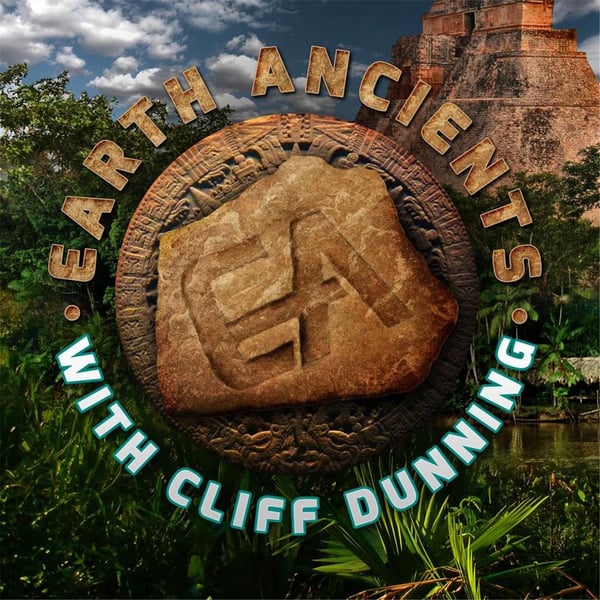Dr. Richard Hansen: Uncovering the Maya Superhighways
Earth Ancients
Cliff Dunning
4.4 • 1.5K Ratings
🗓️ 15 April 2023
⏱️ 109 minutes
🧾️ Download transcript
Summary
LiDAR coverage of a large contiguous area within the Mirador-Calakmul Karst Basin (MCKB) of northern Guatemala has identified a concentration of Preclassic Maya sites (ca. 1000 B.C.–A.D. 150) connected by causeways, forming a web of implied social, political, and economic interactions. This article is an introduction to one of the largest, contiguous, regional LiDAR studies published to date in the Maya Lowlands. More than 775 ancient Maya settlements are identified within the MCKB, and 189 more in the surrounding karstic ridge, which we condensed into 417 ancient cities, towns, and villages of at least six preliminary tiers based on the surface area, volumetrics, and architectural configurations. Many tiered sites date to the Middle and Late Preclassic periods, as determined by archaeological testing, and volumetrics of contemporaneously constructed and/or occupied architecture with similar morphological characteristics. Monumental architecture, consistent architectural formats, specific site boundaries, water management/collection facilities, and 177 km of elevated Preclassic causeways suggest labor investments that defy the organizational capabilities of lesser polities and potentially portray the strategies of governance in the Preclassic period. Settlement distributions, architectural continuities, chronological contemporaneity, and volumetric considerations of sites provide evidence for early centralized administrative and socio-economic strategies within a defined geographical region.
Dr. Richard D. Hansen is a specialist on the early Maya and is the Director of the Mirador Basin Project in northern Guatemala. He has been conducting archaeological research and scientific studies in northern Guatemala for 38 years. He is an Affiliate Research Professor at Idaho State University, after serving as an Adjunct Professor of Anthropology at the University of Utah from 2014 to 2021. He was formerly a Research Professor in the Department of Anthropology at Idaho State University for 8 years and was Senior Scientist at the Institute for Mesoamerican Research at ISU. Prior to that, he was Assistant Research Scientist (Level IV) at the UCLA Institute of Geophysics and Planetary Physics for 12 years. He is the founder and president of the Foundation for Anthropological Research and Environmental Studies (FARES), a non-profit scientific research institution based in Idaho.
https://www.fares-foundation.org/
This show is part of the Spreaker Prime Network, if you are interested in advertising on this podcast, contact us at https://www.spreaker.com/show/2790919/advertisement
Transcript
Click on a timestamp to play from that location
| 0:00.0 | You may have heard about people's postcode lottery, and often wondered how does it work. |
| 0:06.0 | Playing is simple. |
| 0:07.0 | You sign up for a monthly subscription of 12 pounds, guaranteeing you entry into every draw. |
| 0:12.0 | And your ticket is your postcode. |
| 0:15.0 | Prizes are one every day, including millionaire street, where one lucky postcode wins a share |
| 0:21.0 | of 1 million pounds every Saturday. |
| 0:24.0 | Also, at the end of the month, players in one postcode area win a share of a minimum |
| 0:29.0 | of £3.2 million, a minimum of 33% of every ticket goes to charities and good causes across |
| 0:37.0 | Great Britain and beyond, with a staggering £1.1 billion raised so far. |
| 0:43.0 | So, for a chance to win, sign up before midnight on the 24th of August to play in the September |
| 0:49.0 | Draws, and the next winning postcode could be yours. |
| 0:53.0 | PPL managed lotries and behalf of good causes, 18-plus conditions apply. |
| 0:57.0 | Play responsibly, not available in Northern Ireland. |
| 1:00.0 | This summer, why not take a buy-tower to borrow market? |
| 1:04.0 | Or grab the catch-up the day in Hastings? |
| 1:06.0 | A digital network rail card from South Easton is just £30, giving you and up to three adults |
| 1:12.0 | a third of train travel across London and the South East for a whole year. |
| 1:16.0 | Valid when you buy an adult any time or off-peak train ticket worth £13 or more. |
| 1:20.0 | And buy direct from South Easton for no booking fees. |
| 1:23.0 | Visit southeasternrailway.co.uk slash summer savings and start exploring terms and conditions apply. |
| 1:31.0 | This week we look at LiDAR, a revolution in archaeological research and discovery. |
| 1:37.0 | And we look at it from a field archaeologist and that's Dr. Richard Hanson, the architect of the research |
... |
Please login to see the full transcript.
Disclaimer: The podcast and artwork embedded on this page are from Cliff Dunning, and are the property of its owner and not affiliated with or endorsed by Tapesearch.
Generated transcripts are the property of Cliff Dunning and are distributed freely under the Fair Use doctrine. Transcripts generated by Tapesearch are not guaranteed to be accurate.
Copyright © Tapesearch 2025.

